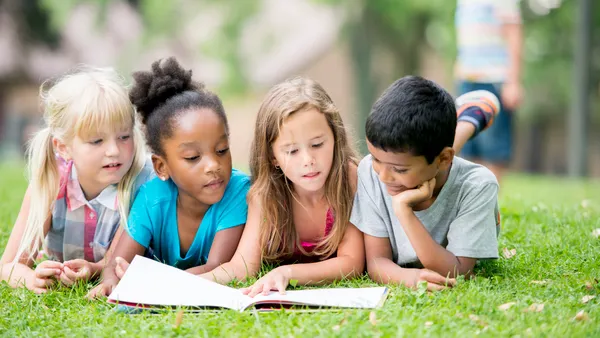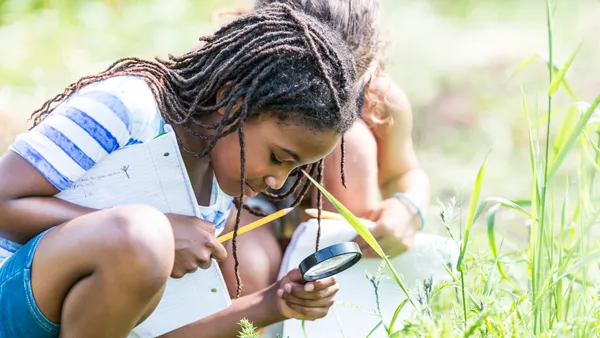Correction: In a previous version of this story, Laura Huffman of the Cannon School was misidentified.
In Laura Huffman’s world history lessons at the Cannon School, students don’t open textbooks and read passages about World War I. Instead her Concord, N.C.-based classes open a kind of time capsule, placing them in Europe where they handle a Victory Medal, another given to German women in exchange for donated jewelry to support the war effort, and a nearly 100-year-old French fashion magazine where the only mention of the war is a simple letter to the editor.
Huffman uses the artifacts as part of a lesson she designed in conjunction with The National World War I Museum and Memorial, which is gearing up for the 100th anniversary of the Armistice of 1918.
“I wanted to give them something tactile they can touch,” Huffman said in an interview. “They have to put on archivist gloves, and in the case of the magazine they have to find someone in the class who is studying French to translate it for them. They love it.”
Awakening history
As the saying goes, history is a story told by survivors. But there are many ways educators can uncover stories that are rarely heard. It takes a curious mind, and a somewhat stealthy demeanor, to craft lessons for students that bring historic moments out of a steamer trunk and into a colorful, breathing experience.
That’s the focus for the World War I museum, based in Kansas City, Missouri, which has spent the past 12 years building K-12 curriculum around The Great War for teachers both at the museum and those who access the material online. Its secret weapons are primary source materials — pieces of history that have time traveled from 1914, when World War I began, to today. These artifacts give evidence of what occurred, even if the people living then can no longer speak.
Teachers are also invited to apply to the museum’s Teacher Fellowship program, which launched in 2013, and allows them to spend an immersive week at the museum, learning how to craft their own lessons using artifacts as well.
Using artifacts
Huffman attended the fellowship program herself, and returned to work with the 2015 and 2016 Teaching Fellows during the same summer Ardyth Watson, a high school teacher at Fayetteville-Manlius High School, in Manlius, N.Y., attended as a fellow. Watson said she always taught her students about World War I with a global focus, and was impressed with the museum’s similar bend as well.
The lesson Watson crafted — and now uses with her students — take them through three days of exploration and primary source material to examine the anti-German sentiment in the U.S. during World War I. That includes looking at laws passed during President Woodrow Wilson’s administration aimed to restrict German Americans, as well as loyalty oaths, and even accounts of German-Americans being lynched. And she packs it all into three, 40-minute class periods.
“World War I was a turning point in the modern era,” Watson said in an interview. “Art, literature and culture all transformed because of the war. The U.S. emerges on a global scale. To me World War I is probably more important if you look at it in that regard than World War II.”
Emotional connection
Huffman too said that many people don’t realize how much World War I continues to impact the world today. Yet she knows that it’s the bread crumbs, like listening to a recording of Ruby Ord, a woman who fought at the front, or letters from soldiers thanking their moms for sending them a care package, that pull students into the stories — and the importance of the history itself.
“Any kid who has gone to sleep away camp knows what it feels to be homesick,” she says. “A solder who says thank you for the biscuits, is something they can relate to and grab on to.”





 Dive Awards
Dive Awards





